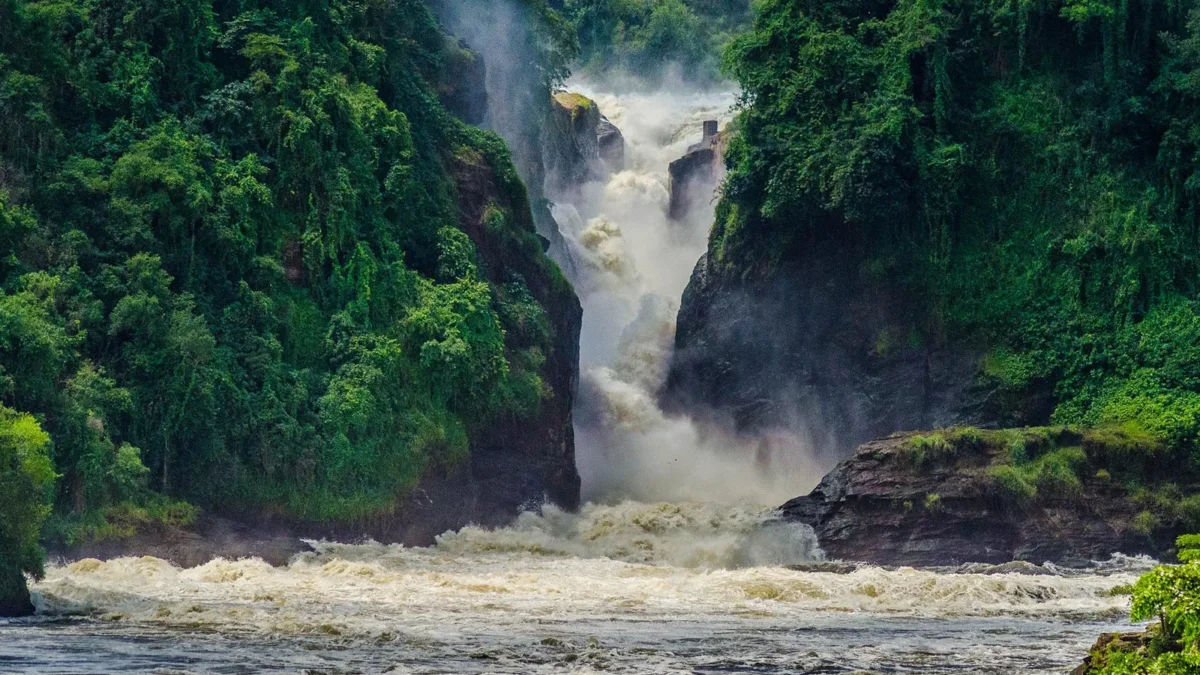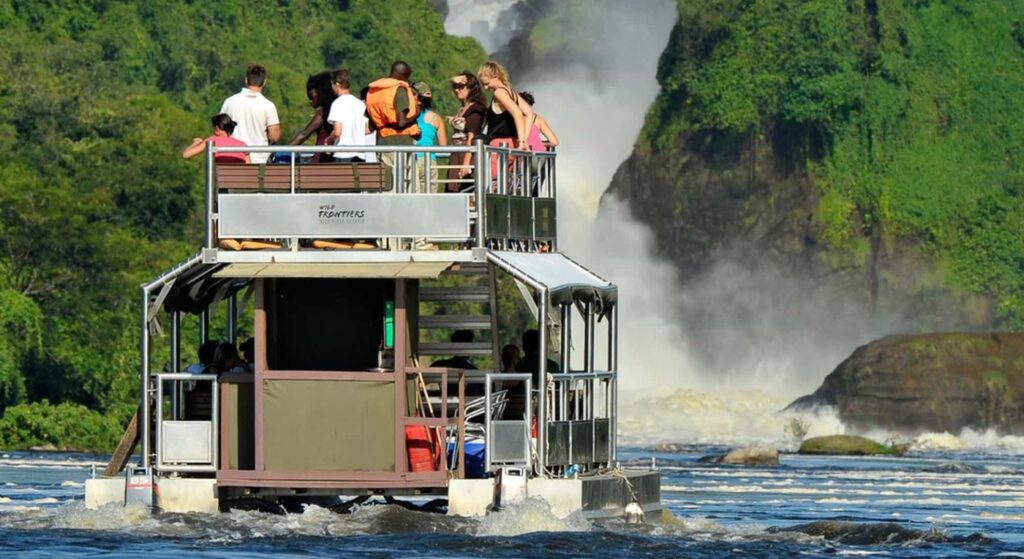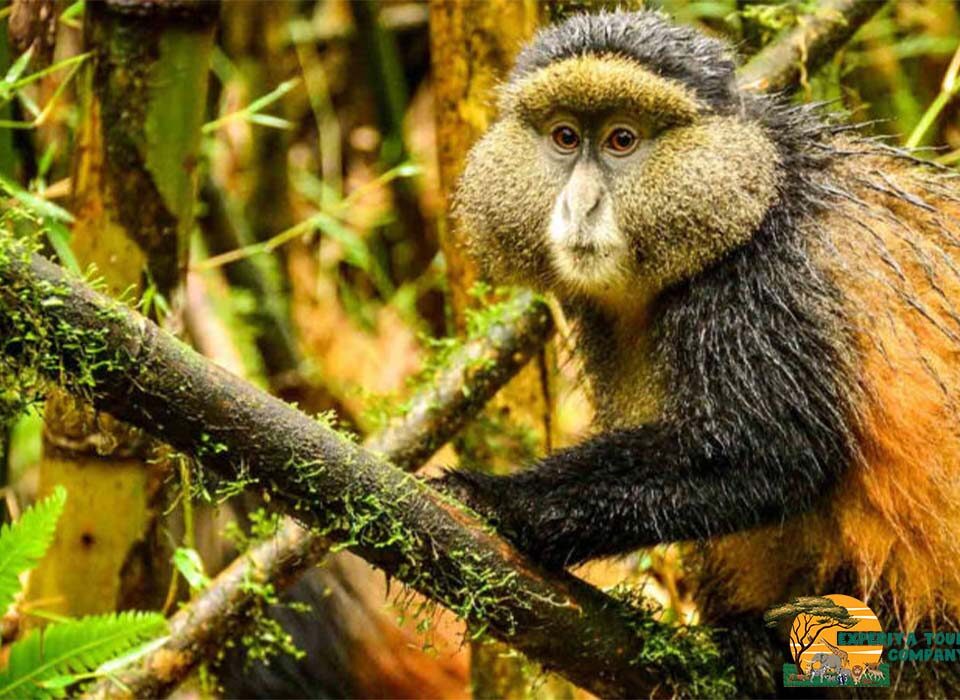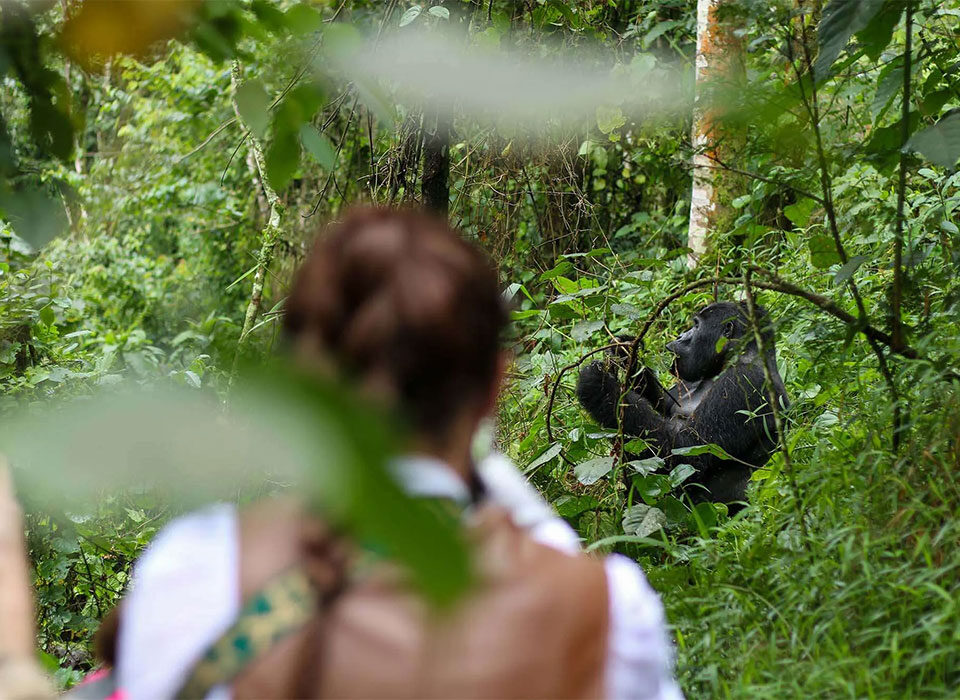
Can I Go on a Boat Cruise Along the Kazinga Channel? | Uganda Safari Guide by Experiya Tour Company
October 23, 2025
How to Reach Murchison Falls from Kampala | Uganda Safari Travel Guide
October 24, 2025Best Time to Visit Murchison Falls National Park | Uganda Safari Guide

What’s the Best Time to Visit Murchison Falls National Park?
Murchison Falls National Park, Uganda’s largest and oldest conservation area, is a masterpiece of natural drama where the mighty Nile River explodes through a narrow gorge before plunging 45 meters into a foaming cauldron. It’s a place where Africa’s wilderness feels raw, wild, and untamed. The park’s vast savannah plains, palm-dotted woodlands, and sweeping riverine landscapes create a stunning backdrop for some of the continent’s most remarkable wildlife. But one of the most common questions for any traveler planning a safari here is: When is the best time to visit Murchison Falls National Park?
The answer depends on what you want to experience. Some travelers come for wildlife sightings, others for birdwatching, and some simply for the scenic serenity of the Nile and the thunderous falls. The park is a year-round destination, but each season brings its own rhythm and rewards. Understanding these will help you choose the best time for your adventure.
Climate and Seasons at Murchison Falls National Park
Murchison Falls National Park enjoys a warm tropical climate throughout the year, with average daytime temperatures ranging between 25°C and 32°C. The park experiences two major seasons: the dry season and the wet season. The dry seasons run from December to February and from June to September, while the wet seasons occur from March to May and October to November. Both periods have distinct characteristics that influence wildlife movements, accessibility, and scenery.
The Dry Season: December to February and June to September
The dry season is generally considered the best time to visit Murchison Falls National Park. It’s the peak safari period when wildlife viewing is at its most rewarding. During these months, the grass is shorter, and water sources are limited, forcing animals to gather around the Nile River and other permanent waterholes. This creates excellent opportunities for game drives, boat safaris, and photography.
The famous Buligi Peninsula becomes a stage for nature’s grand performance, with elephants, buffaloes, giraffes, lions, leopards, and Uganda kobs populating the plains. The roads are dry and easily navigable, allowing visitors to explore deep into the park without difficulty. Game drives in the early morning or late afternoon are especially rewarding when predators are active, and the golden sunlight enhances the beauty of the landscape.
Boat cruises during the dry season are also incredible. The Nile boat ride to the base of the falls offers breathtaking views of hippos, crocodiles, elephants, and countless birds. The experience of watching the Nile squeeze through a seven-meter gorge and explode into mist and thunder below is unforgettable. You can also take a Delta cruise toward Lake Albert for a chance to spot the rare shoebill stork and other aquatic species.
Hiking to the top of the falls is easier and safer during the dry months, as trails are less slippery. The views from above are spectacular, offering a front-row seat to one of Africa’s most powerful natural spectacles. The dry season also ensures clear skies for photography, ideal for capturing the sun-drenched savannah and fiery African sunsets.
The only downside of visiting during the dry season is that it’s also the busiest time of year. Tourists from all over the world flock to Murchison Falls, and lodges fill up quickly. To secure the best accommodations, such as Nile Safari Lodge, Paraa Safari Lodge, or Baker’s Lodge, early booking is highly recommended.
The Wet Season: March to May and October to November
The wet season paints Murchison Falls in a completely different light. The rains transform the park into a lush green paradise, with blooming vegetation and vibrant birdlife. Though the showers can make some roads slippery and certain areas harder to access, the beauty and serenity of the park during this period are unmatched.
Wildlife viewing is still good, but animals may be more scattered due to the abundance of water and food. However, the park never loses its magic. Herbivores such as antelopes, giraffes, and elephants still roam the plains, and predators like lions and leopards remain active. Moreover, the wet season is when many animals give birth, so you may be lucky to see young calves, foals, and cubs exploring their new world.
For birdwatchers, the wet season is the best time to visit. Murchison Falls National Park is home to over 450 bird species, and from November to April, migratory birds arrive from Europe and North Africa. The air is alive with the calls of colorful kingfishers, bee-eaters, and sunbirds, while rare species like the shoebill, Goliath heron, and Abyssinian ground hornbill can be spotted along the riverbanks and wetlands. Bird photography is particularly rewarding during this time due to the lush backgrounds and vibrant light.
Another advantage of the wet season is that it’s the low tourist season, meaning you can enjoy more peaceful safaris and reduced accommodation rates. The rains usually come in short bursts, often in the late afternoon or night, leaving the rest of the day clear and pleasant for activities. For travelers who appreciate tranquility and rich greenery, the wet season is a wonderful time to experience Murchison Falls in its raw, rejuvenated beauty.

Month-by-Month Overview
January to February: Hot and dry, excellent for wildlife viewing and photography. Ideal for game drives and boat cruises.
March to May: Wet season begins; landscapes turn green and birdlife flourishes. Some roads may be slippery but the park remains accessible.
June to August: Peak dry season with abundant wildlife and perfect safari weather. Lodges tend to be full, so early booking is essential.
September: Still dry, with fewer crowds and great conditions for travel.
October to November: Short rains return, greening the park again. Excellent for birdwatching and scenic beauty.
December: Dry season begins again, perfect for holiday safaris and festive travel.
Tips for Planning Your Trip
When planning your visit, consider what type of experience you desire. If your priority is to see as many animals as possible, the dry season is ideal. The thinner vegetation and congregated wildlife around water sources make sightings more frequent and easier. If you are passionate about photography, both seasons offer unique lighting conditions — dry season for golden tones and clarity, wet season for vibrant greens and softer light.
A good safari vehicle, preferably a 4×4, is essential for navigating the park’s terrain. Even in dry months, some sections can be rough. You should also carry sunscreen, a hat, insect repellent, light clothing, and binoculars. For the best experience, choose a lodge that overlooks the Nile or lies close to key game-viewing areas. This allows you to enjoy the sounds of the wild right from your balcony or campfire.
Why Murchison Falls is a Year-Round Destination
Ultimately, Murchison Falls National Park is a place you can visit at any time of the year. It never closes, and each season has something special to offer. The dry months bring classic safari drama, while the wet months reveal the park’s softer, greener side. Whether you come for the wildlife, the waterfalls, or the sense of pure wilderness, Murchison Falls always rewards you with unforgettable memories.
Few places in Africa offer such diversity in one location — powerful waterfalls, open savannahs, thick forests, and the iconic Nile River teeming with life. It’s a place that captures the true spirit of Uganda, often referred to as the Pearl of Africa.
Recommended Safari Operator: Experiya Tour Company
For travelers who want a seamless and authentic safari experience, we recommend exploring Murchison Falls National Park with Experiya Tour Company. With their professional guides, comfortable safari vehicles, and carefully crafted itineraries, Experiya ensures every moment of your journey is memorable. They understand the park’s rhythms, from the best game drive routes to the most scenic viewpoints along the Nile. Whether you’re seeking a luxury lodge experience, a family adventure, or a romantic getaway, Experiya handles all logistics with expertise and passion. Traveling with Experiya Tour Company means traveling with confidence, comfort, and a deep respect for Uganda’s wild beauty.



